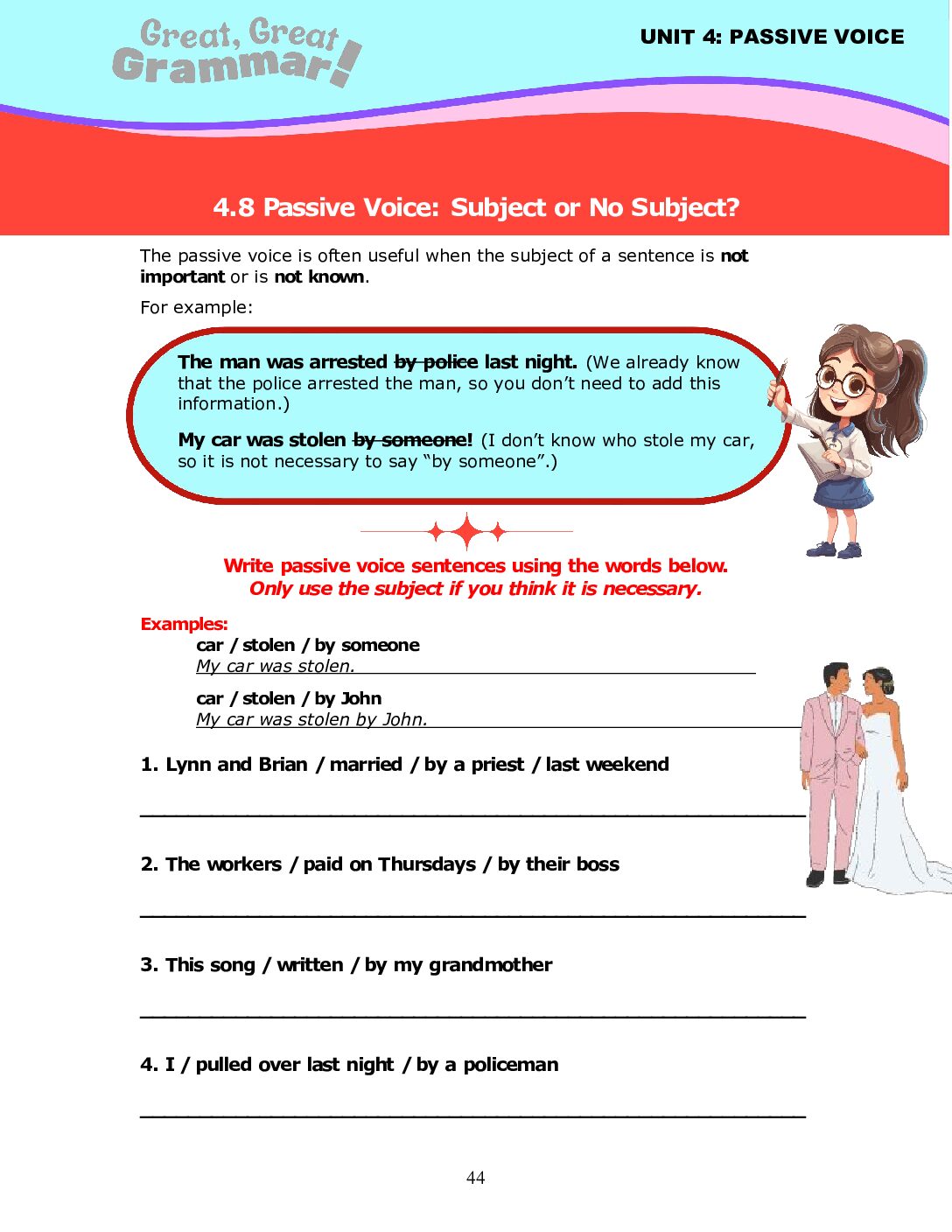In this ESL grammar lesson, students must determine whether the subject is necessary in various passive voice sentences.
ESL Grammar: What is Passive Voice Without the Subject?
In passive voice constructions, the subject (the performer of the action) is often included to provide context. However, there are situations where omitting the subject is more appropriate or necessary. This typically happens when:
- The doer of the action is unknown.
- The doer is irrelevant or obvious.
- The emphasis is solely on the action or its result.
Structure of Passive Voice Without the Subject
The structure remains similar to the standard passive voice but without the “by + agent” part. Here’s the formula:
Subject (receiver) + to be (in the correct tense) + past participle
Examples of Passive Voice Without the Subject
- Present Simple:
- Active: The company publishes the report.
- Passive: The report is published.
- Past Simple:
- Active: Someone painted the house.
- Passive: The house was painted.
- Present Continuous:
- Active: They are repairing the road.
- Passive: The road is being repaired.
- Present Perfect:
- Active: They have delivered the packages.
- Passive: The packages have been delivered.
The English grammar lesson below explains how and when to omit the subject when using the passive voice, in clear and simple language that is easy for ESL learners to understand. Our series of ESL grammar lessons on subjects and verbs introduce these concepts and reinforce them through helpful and instructive exercises.
This lesson is available for free download, and you can download many more English grammar lessons focusing on advanced aspects of English grammar (past continuous tense, present perfect tense, present perfect continuous tense, passive voice, embedded questions, relative clauses) in our comprehensive, intermediate- to advanced-level ESL grammar textbook Great, Great Grammar! (Book 3: Tenses and More!).

